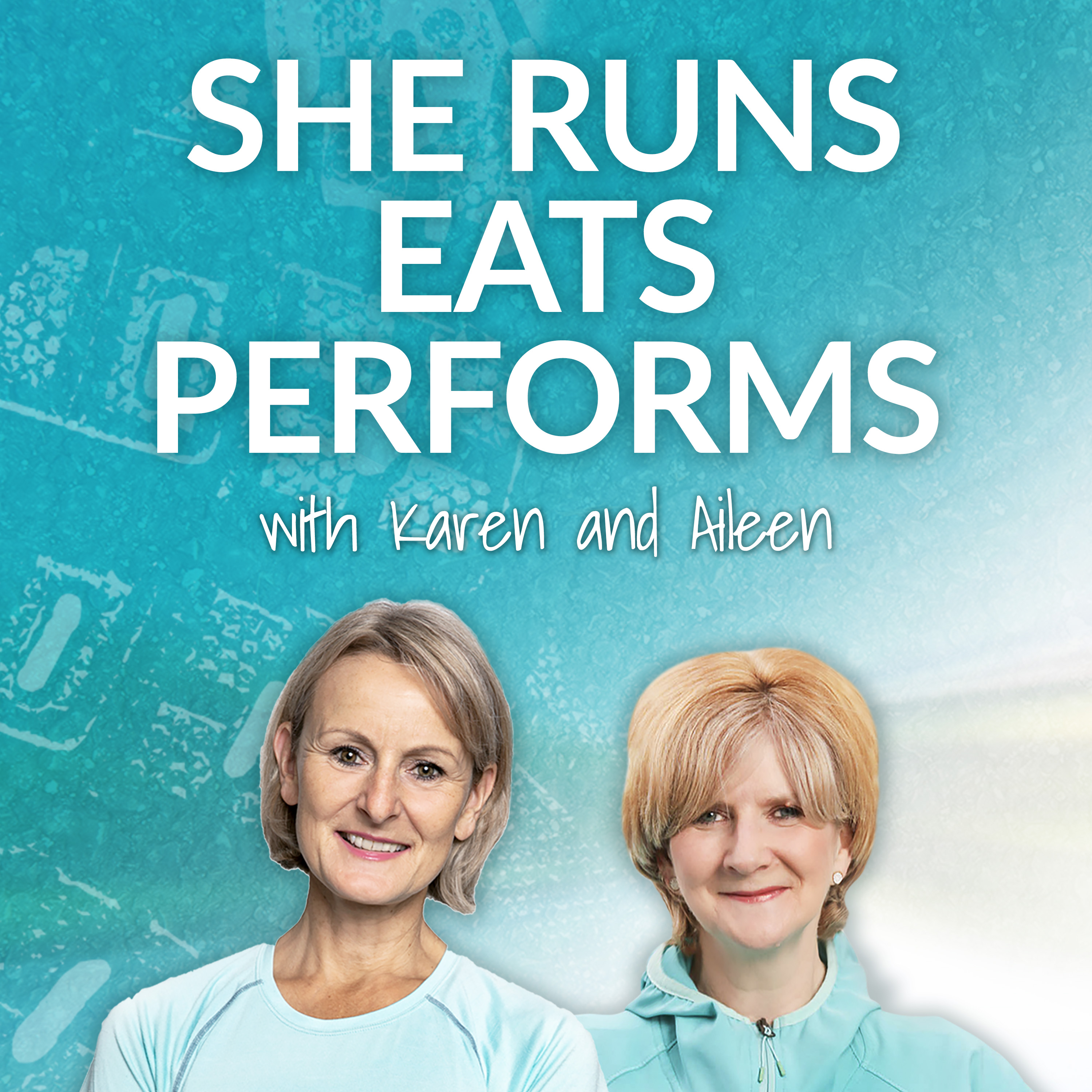Eating Enough to Run?
Eating Enough to Run?
Low energy availability for performance is something that many athletes may suffer from. It may be as a result of trying to lose a little weight or trying to maintain a low weight for your sport. It may happen consciously or it may be that an athlete’s slips into this state without an understanding of what is occurring.
In this episode we are going to delve into the health and performance consequences of low energy availability before giving you some ideas of how to seek help and support if required and some hints and tips on how to avoid slipping into this scenario.
SHOW NOTES
(05:18)
Why is it important to discuss this topic?
Well, The short answer is because appropriate energy availability is essential for attaining and also maintaining exercise performance. But to expand on that: energy availability is dependent on energy intake from the diet matching the energy expenditure of exercise, where the energy expenditure of exercise is calculated as the energy expended, above that required for daily living. BUT for many runners (and other athletes) there is a mismatch between the two, leaving inadequate energy to support the normal functions of the body and exercise performance.
Optimal energy availability for the healthy physiological functioning of the body is typically achieved at an energy availability of 45 calories per KG of free fat mass per day. Free fat mass is used as a measure because it is a good reflection of the body's most metabolically active tissue.
(12:50)
The health effects of low energy availability (LEA) include:
Endocrine disruption –It is thought that hormones become disrupted in an effort to conserve energy for the most important bodily functions and processes.
Sex Hormone disruption –especially a decrease of oestrogen and progesterone production in women and testosterone in men potentially leading to fertility issues.
Menstrual dysfunction – Low Energy Availability is thought to affect Gonadotropin Releasing Hormone pulsitility within the Hypothalamus, which then leads to the disruption to Leutinising Hormone and Follicle Stimulating Hormone, and oestrogen/progesterone,
Impaired bone health – generally linked to amenorrhoea (loss of periods) and affects BMD, bone turnover, bone strength and an increased risk of stress fracture.
Reduced Resting Metabolic Rate - as a result of reduced T3 thyroid hormone production. Appears to be really prevalent in endurance athletes.
Impaired blood cell formation and turnover (haematopoiesis) – this appears to be linked to low iron availability as a result of Low Energy Availability.
Compromised immune function – leading to increased risk of infection (such as URTI), inflammation, injury as well as GI symptoms.
Impaired cardiovascular health – low oestrogen levels are associated with atherosclerosis and poor lipid status ie DHL/LDL levels. But severe Low Energy Availability (LEA) and Eating Disorders (ED) may lead to significant Cardiovascular changes including: irregular heart beat and hypotension
Gastrointestinal dysfunction – including altered sphincter function, delayed gastric emptying, constipation and increased intestinal transit time
Compromised muscle function – a daily protein intake of less than 30Kcal per Kg of free fat mass is known to reduce muscle synthesis
Psychological issues - are closely linked to LEA and these issues may precede or be caused by LEA. A higher drive for thinness, which is associated with DE/ED is one of the known leading triggers of LEA.
(22:56)
Low Energy Availability and Relative Energy Deficiency in Sport (RED-S) are very closely linked, in fact low energy availability underpins the concept of RED-S
(25:38)
It is thought that LEA could impair sports performance via a variety of different mechanisms, which makes sense when you think about the various body systems that are compromised due to LEA. Some include:
- Poor recovery from training
- Suboptimal physical, psychological and emotional capacity
- Impaired muscle mass and function
- Compromised glycogen storage
- Reduced protein synthesis
- Increased risk of illness and injury
(27:50)
FEMALE FACTORS:
- LEA is more prevalent in females than males
- LEA is more prevalent in women competing in endurance sports (e.g. running, cycling, rowing) and sports where they need to make weight (e.g. gymnastics, dance, rowing, horse riding)
- Women are at increased risk of impaired bone health than men as a result of LEA
- Disordered Eating and Eating Disorders are more prevalent in women than men…and they are often a precursor to LEA.
(32:09)
What can be done to help prevent a runner developing low energy availability and this RED-S?. Increased awareness comes top of the list because recent surveys have found that less than 50% of health/sports professionals are able to identify aspects of LEA/RED-S. Additionally, only 19% of school nurses could identify the key symptoms. It would also appear that many female athletes think it is normal for active women to have irregular periods and appear to be unaware that menstrual dysfunction could be a risk factor for suboptimal bone health.
Could YOU be at risk of LEA?
- Do you frequently train and forget to eat immediately afterwards?
- Do you restrict your caloric intake to try and attain/maintain a lean physique?
- Are you under pressure to keep below a certain weight for your sport?
- Do you frequently skip meals but train hard?
If you answered yes to any of these questions you may be at increased risk of suffering from LEA and RED-S.
(36:40)
Some practical strategies to help prevent LEA occurring include:
- Eat if you feel hungry, do not go hungry for long periods of time
- Think about the food choices you are making…are they nutrient dense? Eating sufficient micronutrients will be important too esp iron, calcium and vitamin D
- Remember to eat PRE/DURING/POST long training runs
- ALWAYS eat following any type of running (ensuring it is nutrient dense…remember it is not just about replacing the energy used. Use Athlete’s Plates as a guide
- Ensure you are taking onboard at least 45Kcal/Kg FFM/d – if you want to measure/log intake
- Consider the performance triangle ie. training/nutrition/rest and sleep
(44:34)
KEY TAKEAWAYS:
- Appropriate energy availability (EA) is essential for attaining and maintaining exercise performance but for many runners there is a mismatch between EI and Energy Expenditure of exercise leaving inadequate energy to support the functions of the body needed to maintain optimal health and performance.
- Currently it is thought that optimal EA for healthy physiological function can be achieved at an energy availability of 45Kcal/Kg of FFM (free fat mass) per day. Health and performance appears to be negatively affected at an EA of 30Kcal/Kg FFM/d….so this is generally accepted as the threshold for LEA.
- The health effects of LEA are far reaching including: hormonal and menstrual dysfunction, compromised gastrointestinal function and suboptimal immune and cardiovascular health.
- Running Performance is also affected in several ways including: poor recovery from training, reduced physical, psychological and emotional capacity, impaired muscle mass and function, compromised glycogen storage and an increased risk of illness and injury.
- Some steps you could take to prevent LEA developing include: eating nutrient dense foods regularly, never letting yourself get too hungry and not letting yourself be hungry for too long, remember to eat pre/during post long runs and ALWAYS eat something after ALL runs, no matter what the distance.
- Finally, but most importantly if you suspect you may be at risk of LEA then we highly recommend you work with a professional to help you to support your nutritional needs for everyday health and your running goals.
Related Episodes:
Ep6 The Performance Effects of Overtraining Syndrome
Disclaimer:
The suggestions we make during this episode are for guidance and
advice only, and are not a substitute for medical advice or treatment.
If you have any concerns regarding your health, please contact
your healthcare professional for advice as soon as possible.
Aileen Smith and Karen Campbell met at as nutrition students (Institute for Optimum Nutrition, London) and became lifelong friends and nutritional buddies! Both have a love of running and a passion for nutrition, delicious food and healthy living.
Together they host RUNNERS HEALTH HUB. A place for like-minded runners who are looking for simple ways to support running performance, energy, endurance, and general great health.
We are excited to be able to share our expertise, experience and short cuts with you. We hope you'll join us again. If you'd like to know more about us and She Runs Eats Performs please check out our TRAILER.
If you're ready to make learn more about how you may introduce easy nutrition into your running and training plan join our Easy Nutrition For Healthy Runners Online Programme for short videos, recipes, downloads and LIVE training and Q&A.
As a THANK YOU to you as one of our valued listeners, we have a special offer for you use COUPON CODE POD to get 33% discount off the full price which brings the price to £199.
If you’d like help from Karen and Aileen to design a personalised sports nutrition plan for your running - please contact them at hello@runnershealthhub.com
Happy Running!
Aileen and Karen

